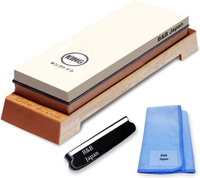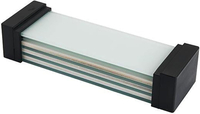This chef’s trick for sharpening kitchen knives will have you prepping like a pro
Keeping a knife sharp is not only needed for proper food prep, but it is important for kitchen safety too, chefs say
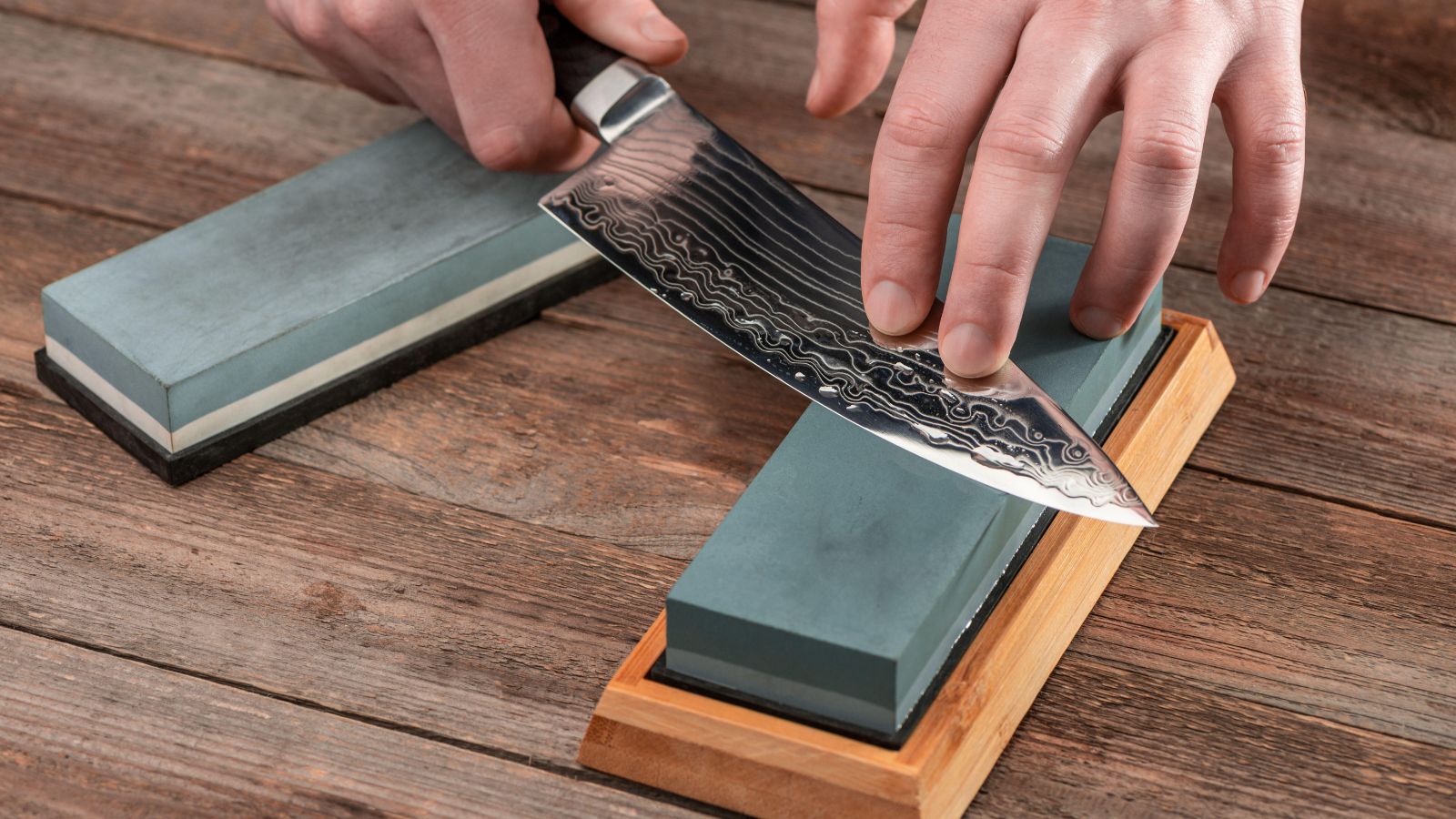

A good kitchen knife is the most important tool a chef owns and keeping it sharp is essential for quick food prep and staying safe in the kitchen.
Even though it may seem contradictory that having a sharp item is ‘safe’, a blunt knife can lead you to use improper cutting techniques resulting in injuries that could have otherwise been avoided by resharpening an old blade.
Here, professional chefs have revealed the best way to sharpen your best kitchen knives at home, so you can cook like a professional – and keep all of your fingers.
The best way to sharpen kitchen knives
Along with good chef's knives, one of the most important things every home cook should have in their kitchen is a whetstone, says Chef Stephen Naylor, head chef at Story Cellar, having previously been sous chef at a two-Michelin star restaurant in London, UK.
‘Keeping a knife sharp is important for the same reason it is important to keep air in a car's tires or good batteries in a flashlight – to make them work properly! A knife's function is to cut, and a dull knife requires more force behind it in order to cut. This results in a reduced amount of control and an increased chance of slipping once the cut is made.
'A whetstone has been used to sharpen knives for centuries – and for good reason. They are perfect for carefully and attentively shaving off small amounts of metal to repoint a dull edge.’
Kingstone Whetstone Starter Set | $49.88 at Amazon
Recommended by experts, this premium whetstone comes with everything you need to start sharpening your kitchen knives at home for the first time.

Stephen joined the team at Story cellar as Head Chef two years ago, having previously worked as Sous Chef at the two-Michelin-star Restaurant Story for four years. Stephen has also been nominated for the Young Chef of the Year Award 2021.
One alternative to whetstones is a Japanese knife stone, recommends Chef Lee Hernandez of Rozu, a Japanese Sushi restaurant in Rockville New York. ‘While the King Stone whetstone is a great brand and very inexpensive for a home cook, for a professional setting, I prefer Shapton glass stones – they get my knives extra sharp,’ he explains.
What’s more, ‘glass stones are really easy to use with no need to soak them in water, like traditional Whetstones,’ adds Chef Stephen Naylor, making them ideal for amateur home cooks who are looking to take their home kitchen up a notch.
Shapton Glass Stone and Holder Set | $306 at Amazon
Perfect for those home chefs looking to elevate their knife sharpening skills, this professional-grade glass stone is perfect for high-quality knives.
The best technique for sharpening kitchen knives with a whetstone
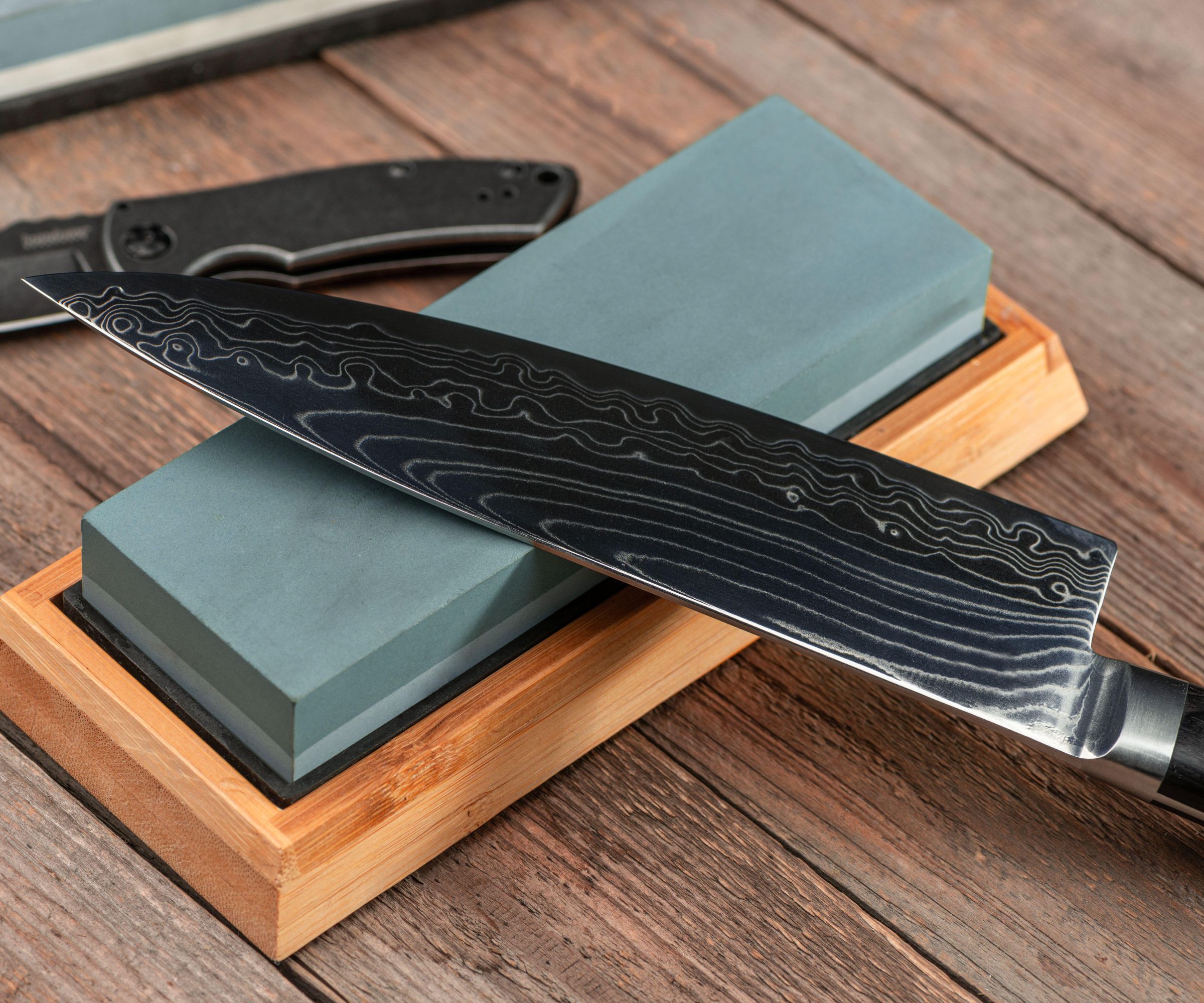
Using the right tool only takes you so far in sharpening your kitchen vines. It is the technique you use that makes the biggest difference, Chef Peter Sidwell, in-house chef at CookServeEnjoy. The technique takes patience and practice, but is the best way to sharpen kitchen knives, he says.
- Some whetstones are designed to be soaked before use, so always check the manufacturer’s instructions. If needed, submerge it into water or oil so that it’s fully saturated and you don’t see any bubbles floating out of it.
- Place a damp tea towel down onto a flat surface to keep the whetstone from sliding. If your whetstone has two different sides with differing levels of abrasiveness, start with the coarser side facing upwards.
- Wet your knife’s blade with a bit of water to reduce friction.
- Hold your blade onto the stone at a 20-degree angle with the sharp edge touching the surface of the whetstone. The tip should be pointing away from you.
- With your hand that’s not holding the knife, rest your fingers on the flat surface of the blade and let your thumb fall onto the handle. Your fingers should be well clear of the knife’s edge.
- Slowly but firmly drag the knife across the whetstone, following the curve of the blade. Make sure that you’re holding it at the same angle as you move and repeat this three to four times on each side.
- Turn your whetstone over to reveal the fine-grind side and carry out the steps again on the stone’s smoother side.
- Give the blade a clean before using.
When you are first learning how to use a whetstone of a glass stone, you may wish to use a guide first to help you get the right angle, suggests Chef Lee Hernandez of Rozu. ‘There are many knife guides, like this one, that you can buy on Amazon to help get that perfect 50/50 edge on your knife and prevent causing more damage to your knife as you learn. When I first started in the kitchen, this helped me out a lot.
‘I also recommend looking up YouTube videos on how to sharpen knives,’ he adds. ‘Once you're comfortable, you'll be able to ditch the guide and freehand it.’
How to keep knives sharper for longer
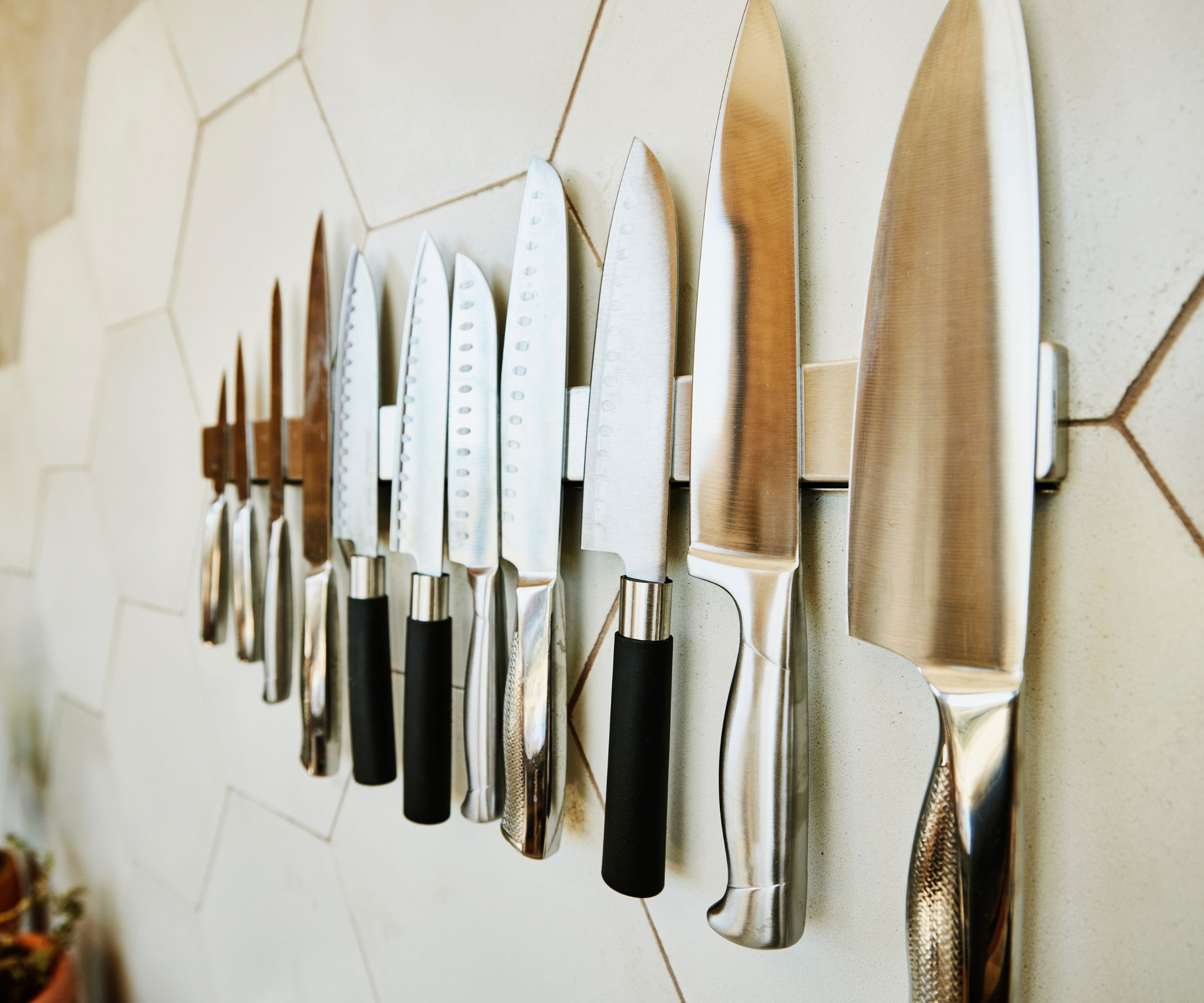
Besides sharpening your knives, there are a few things you can do to help keep them sharper for longer to prevent over-sharpening and weakening the integrity of the blade, explains Chef Mark Alba, professional chef at Hartley Kitchen and Cocktails at The Kimpton Shane Hotel, Atlanta.
Store your knives correctly: Many of us likely throw our knives into our standard kitchen organizers, but failing to protect the blade can lead to a blunt edge more quickly, Mark warns. ‘I store my knives on magnetic strips. If I store them in a drawer, then I protect the blade edge with a wooden or plastic sheath. If you take care of your knives, they can last a lifetime for a home cook.
Always hand wash your knives: While the dishwasher may be good enough for your cutlery, a good chef's knife is one of many things you should put in a dishwasher to preserve the metal. Instead, they should always be washed by hand to keep the blade sharp, Mark Alba recommends. ’Heat and detergents can ruin the metal and finishes and destroy your wooden handles,’ he explains. ‘Always hand wash, no exceptions.’
FAQs
Are pull-through knife sharpeners any good?
Pull-through knife sharpeners are a good tool for your cheaper knives and can help to get a slightly sharper edge quickly and safely with little technique required. However, they are prone to degrading the quality of your knife over time. These small tools pull away more metal than a whetstone, weakening the durability of the knife and meaning you have to replace it more quickly. As a result, they may not be the best thing to use with high-quality knives that you have spent good money on.
Can you ruin a knife by sharpening it?
If you use the right technique and tools, then a knife will not be ruined by sharpening it. Any knife will slowly lose its durability when sharpened, however, regardless of technique, as the process removes small layers of metal to repoint the blunt edge. In the end, every knife irrespective of quality will need to be replaced after you have sharpened it several times. How often it needs replacing will depend on if you sharpen it correctly, and the quality of the knife in the first place.
Although many an average home cook may declare whetstones one of many kitchen items that you don’t need, they are one tool that more of us should be embracing in our homes. Keeping your existing knife sharp is much more cost-effective than replacing a knife every time it dulls, and you will be protecting yourself from any possible slips and cuts in the future.
Sign up to the Homes & Gardens newsletter
Design expertise in your inbox – from inspiring decorating ideas and beautiful celebrity homes to practical gardening advice and shopping round-ups.

Chiana has been at Homes & Gardens for two years and is our resident 'queen' of non-toxic living. She spends most of her time producing content for the Solved section of the website, helping readers get the most out of their homes through clever decluttering, cleaning, and tidying tips. She was named one of Fixr's top home improvement journalists in 2024.
-
 This simple marble hack elevates my budget-friendly wooden kitchen countertops and prevents the dreaded water damage for way less than you’d think
This simple marble hack elevates my budget-friendly wooden kitchen countertops and prevents the dreaded water damage for way less than you’d thinkThis design trick looks expensive, solves a problem, and was the easiest decision I made during my kitchen reno
By Charlotte Olby Published
-
 Emily Blunt gifted Cillian Murphy this $545 pillow – she's 'obsessed' with these luxury pillows, and frankly, so are we
Emily Blunt gifted Cillian Murphy this $545 pillow – she's 'obsessed' with these luxury pillows, and frankly, so are weThe Oppenheimer stars sleep on this ultra-luxe goose down pillow – here's why we love it – plus our affordable alternatives from $35
By Sophie Edwards Published
